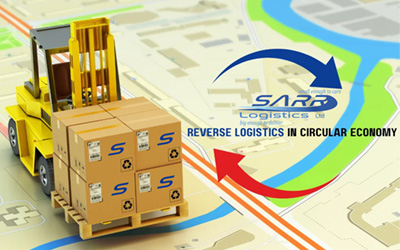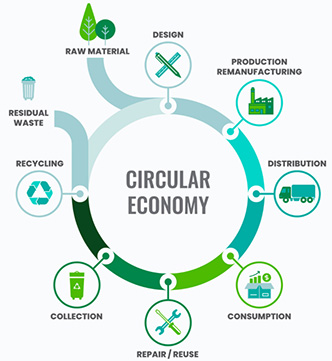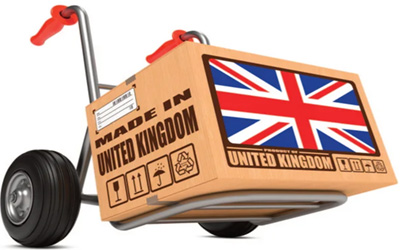Circular Logistics Implementation Strategies in UK Freight Forwarding
Introduction
The global shift towards sustainability is reshaping industries, and freight forwarding is no exception.
The UK logistics sector is increasingly embracing circular economy principles to reduce waste, enhance efficiency, and minimise environmental impact.
Circular logistics is a transformative approach that prioritises the reuse, refurbishment, and recycling of materials throughout the supply chain. In this guide, we explore the essential strategies for implementing circular logistics in UK freight forwarding.
Understanding Circular Logistics
What Is Circular Logistics?
Circular logistics is a sustainable approach that integrates circular economy principles into supply chain management. It focuses on resource optimisation by designing out waste, promoting asset reuse, and improving end-of-life product management. Unlike traditional linear supply chains that follow a “take-make-dispose” model, circular logistics prioritises long-term sustainability.
Why Circular Logistics Matters in Freight Forwarding
Reduces Carbon Footprint: Lower emissions through optimised transport routes and reduced waste.
Enhances Cost Efficiency: Savings through material reuse and reverse logistics.
Regulatory Compliance: Aligns with UK and EU environmental regulations.
Competitive Advantage: Attracts eco-conscious customers and businesses.
Key Strategies for Implementing Circular Logistics
Case Studies: Circular Logistics in Action
1. Reverse Logistics Integration
Reverse logistics is essential in a circular system. It involves managing returned goods efficiently, refurbishing, or redistributing them back into the supply chain.
Implement Return Policies: Encourage businesses to design products with reuse in mind.
Optimised Collection Systems: Use centralised hubs for sorting and redistribution.
Technology-Driven Solutions: Employ AI-driven tracking systems to streamline returns.
2. Sustainable Packaging Solutions
Freight forwarders must work with suppliers and clients to adopt eco-friendly packaging solutions.
Biodegradable Materials: Use plant-based plastics, recycled paper, or reusable crates.
Minimalist Packaging: Reduce excess materials without compromising product safety.
Closed-Loop Packaging Systems: Encourage packaging reuse between suppliers and customers.
3. Smart Route Optimisation
Efficient transport planning reduces emissions and lowers operational costs.
AI and IoT Integration: Use predictive analytics to optimise delivery routes.
Collaborative Transport Networks: Share cargo space to maximize efficiency.
Electrification of Fleets: Invest in electric or hybrid delivery vehicles.
4. Warehousing and Inventory Management
Sustainable warehousing is crucial for a circular logistics model.
Automated Inventory Tracking: Prevent overproduction and reduce waste.
Energy-Efficient Warehouses: Install solar panels and implement LED lighting.
Adaptive Storage Solutions: Use modular storage to accommodate shifting demand.
5. Partnering with Green Suppliers
Freight forwarders should collaborate with partners who align with circular economy values.
Certifications and Compliance: Work with vendors following ISO 14001 standards.
Local Sourcing: Reduce emissions by sourcing from regional suppliers.
Ethical Material Sourcing: Ensure supply chain transparency and sustainability.
6. Technology-Driven Circular Supply Chains
Innovations such as blockchain, AI, and IoT are revolutionising circular logistics.
Blockchain for Transparency: Enhance tracking of materials and waste reduction efforts.
AI-Driven Demand Forecasting: Improve inventory management and reduce excess stock.
IoT for Asset Monitoring: Track reusable packaging and shipment conditions.
7. Regulatory Compliance and Policy Adaptation
Staying compliant with UK and EU environmental policies ensures smooth operations.
Adherence to Extended Producer Responsibility (EPR) Regulations
Compliance with Waste Framework Directive
Understanding Post-Brexit Trade and Environmental Policies
Case Study 1: Major UK Retailer’s Reverse Logistics Success
A leading UK retailer partnered with freight forwarders to establish a robust returns management system. By refurbishing 60% of returned goods and reselling them, they reduced waste and boosted profits.
Case Study 2: Sustainable Packaging Initiative in E-commerce
An e-commerce giant switched to compostable packaging and implemented a packaging return program. This reduced plastic waste by 40% and significantly cut costs.
Case Study 3: Green Warehousing in London
A logistics company transformed its warehouse into an energy-efficient hub, using solar energy, smart inventory tracking, and automated systems, resulting in a 30% reduction in energy costs.

Future of Circular Logistics in the UK
The UK logistics industry is evolving rapidly, with government incentives and corporate commitments driving sustainability initiatives. The future will likely see:
More widespread adoption of electric freight transport.
Advancements in AI-powered circular logistics platforms.
Stronger regulatory frameworks enforcing sustainability practices.
FAQ
 Q: What is Circular Logistics?
Q: What is Circular Logistics?
A: It’s when products, after use, go back into a new life cycle or supply chain. They may be recycled, repaired, or refurbished for resale. Others will be repurposed or broken down into components are raw materials to make new ones.
Q: What is an example of circular supply chain?
A: Nike’s Reuse-A-Shoe program encourages customers to bring old sneakers to local Nike sellers.
Renault has long blazed trails in circular manufacturing.
Q: What does CE mean in supply chain
A: Circular economy (CE) initiatives are taking hold across both developed and developing nations. Central to these initiatives is the reconfiguration of core supply chain management (SCM) processes that underlie current production and consumption patterns
Conclusion
Circular logistics is the future of freight forwarding in the UK. By implementing strategies such as reverse logistics, smart routing, sustainable packaging, and advanced technologies, companies can drive efficiency, reduce costs, and meet sustainability goals.
As the industry embraces these changes, freight forwarders who proactively integrate circular logistics will gain a competitive edge in the evolving global market.
SARR Logistics UK
With a legacy built on trust, backed by extensive experience, a global network, and a customer-centric approach, SARR Logistics UK emerges as the ultimate partner for all your supply chain needs.
If you would like to know more reach out to us today and experience a seamless, efficient, and dependable shipping solution tailored to elevate your business. For further inquiries and to explore how SARR Logistics UK can help you contact our team.









